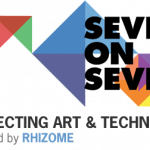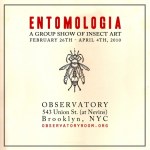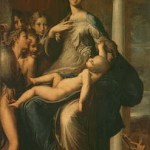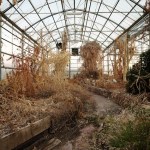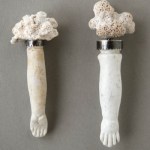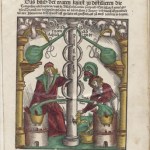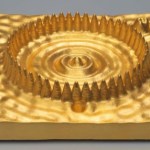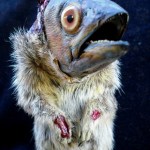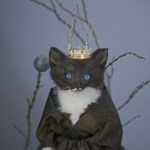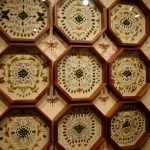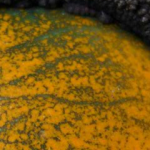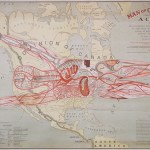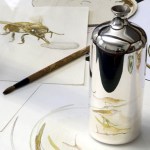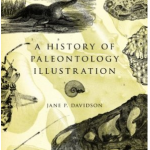Museum Lust
An interesting post from Repository for Bottled Monsters gathers together a few links on art/exhibit censorship, like this opinion, "Why Some Art Should Be Censored," from the Shreveport Times: "Another sort of case concerns the use of human corpses in art. There is a venerable tradition of showing the dead for various reasons, as in Rembrandt's famous The Anatomy Lesson of Dr. Tulp or Goya's depictions of the horrors of war -- not to mention numerous crucifixions. . . "
Feb 23rd (tomorrow) is the last day to snag advance tickets to the Seven on Seven conference in NYC:
Seven on Seven will pair seven leading artists with seven game-changing technologists in teams of two, and challenge them to develop something new --be it an application, social media, artwork, product, or whatever they imagine-- over the course of a single day. The seven teams will unveil their ideas at a one-day event at the New Museum on April 17th.
If you go, let me know how it is!
Upcoming at Observatory in NYC: Entomologia (Feb 26-April 4), a group show of art incorporating and inspired by insects. I'm particularly intrigued by the discussion scheduled for April 3, "Transgenics, Cybernetics, and Evolution:"
Silkworms engineered to produce pharmaceuticals and hormones, cyborg dragonflies designed for high-speed missions and surveillance... In connection with her recent work, Shanna Maurizi has been delving into the nether regions of genetic engineering and transgenics, molecular biology, and military cybernetics.
Ok, sounds good to me! Plus it's curated by Curious…
The famous apple-tree story, from a manuscript by one of Newton's friends:
"After dinner, the weather being warm, we went into the garden and drank tea, under the shade of some apple trees. [Newton] told me, he was just in the same situation, as when formerly, the notion of gravitation came into his mind. It was occasion'd by the fall of an apple, as he sat in contemplative mood.'Why should that apple always descend perpendicularly to the ground,' thought he to himself. 'Why should it not go sideways, or upwards? But constantly to the earth's centre? Assuredly, the reason is, that the earth…
Madonna and Child with Angels, AKA "Madonna with the Long Neck"
Parmigianino, c. 1534/40
From Edward Winkleman's blog, a good post about yet another art historian with convenient medical explanations for the artistic idiosyncrasies of the old masters. In addition to arguing that the Mona Lisa had high cholesterol, the historian has an even more timely link to current events:
Among his other findings are that two of the most iconic figures in Renaissance art had a rare condition that may also afflict Osama Bin Laden. One is the young man with a red cap and distinctly sardonic expression who…
A simply insane list of digital museums, libraries, and learning resources.
BldgBlog has a great post featuring Noah Sheldon's photographs of the decaying, abandoned Biosphere 2.
From BldgBlog:
"The structure was billed as the first large habitat for humans that would live and breathe on its own, as cut off from the earth as a spaceship," the New York Times wrote back in 1992, but the project was a near-instant failure.
Scientists ridiculed it. Members of the support team resigned, charging publicly that the enterprise was awash in deception. And even some crew members living under the glass domes, gaunt after considerable loss of weight, tempers flaring, this…
"Insectopedia"
Kiff Slemmons
Self-taught metal artist Kiff Slemmons' classic series "Insectopedia" is a collection of metal pins fusing insects with typography. She's also known for working with found objects like shells, stones and bones, as in the following pieces from her recent show with Kay Sekimachi at Velvet da Vinci in NYC:
"Corallary 2 & 3" Brooches
Kiff Slemmons
"Atoll" Necklace
Kiff Slemmons
View a complete set of photos from the Velvet da Vinci show here.
More:
Article on Kiff Slemmons at Ornament Magazine
The National Library of Medicine's "Turning the Pages" gallery lets you turn the virtual pages of classic science/medicine manuscripts. Check out Hieronymus Brunschwig's Liber de Arte Distillandi de Compositis (1512):
Note that the NLM's copy is hand-colored; uncolored copies also exist, such as this copy at ECHO. Comparison with the images of the ECHO copy show that NLM has elided the boring, text-only pages from their animation.
I'm not usually a big fan of animations that try to replicate the tactile experience of books, but given that you aren't usually allowed to touch manuscripts of…
Voss-Andreae is therefore either brave or foolhardy to try to represent quantum phenomena tangibly. Perhaps his greatest asset as a former physicist is that he realizes how much we don't know. In some of his works, the inverted commas of analogy are explicit to the knowing eye. Quantum Corral (pictured) materializes something that could hardly be less material: the wave-like properties of electrons, first reported in Nature in 1927. Here, they are represented in a block of wood that has been milled to the contours of electron density seen in 1993 around a ring of iron atoms on the surface…
Has your week been like this, too? I'm just checking. . .
"Fish in a squirrel suit" by Slightly Curious.
Via Regretsy.
A gift idea for the person who already has everything: spider silk couture! (Or the closest thing to it). It took one million spiders to produce the silk for this textile from Madagascar (although the wild spiders were released after their silk was extracted, so some of them may have been repeat donors.) The video is absolutely fascinating:
The silk is naturally golden and undyed. Each individual thread in the cloth was made by twisting 96 to 960 individual spider silk filaments together. I would love to touch it - I can't really imagine what it must be like, can you?
Via Wouldn't You Like…
According to Reuters, Gunther von Hagens of Body Worlds fame is going to create an entire exhibit showing plastinated cadavers in sexual poses. He already includes two "copulating cadavers" in his current show:
German politicians called the current "Cycle of Life" show charting conception to old age "revolting" and "unacceptable" when it showed in Berlin earlier this year because it included copulating cadavers.The way a plastinate is exhibited can vary from country to country to reflect local sensibilities. A vote of local employees decided that one of the copulating female cadavers should…
Joanna of Morbid Anatomy is on a quest to locate private collections of medical oddities. She's already sussed out fourteen such hidden wunderkammern and photographed their treasures, but she wants to find more:
"Who are these private collectors, and what sort of treasures do they possess? How might their methods of displaying collections differ from institutional approaches? Are we reaching a historical moment similar to the pre-museum era of private cabinets, in which the most interesting artifacts are now in private rather than public hands?"
It's a really interesting question.…
Curious Expeditions has a great interview with Jennifer Angus, the artist who recently redecorated the Newark Museum's Victorian Ballentine House with dead insects in an installation called "Insecta Fantasia." Wow!
The Museum restored the elegant abode to its original dark wood and horror vaccui (fear of empty space) style. This fear of empty space is often seen in Victorian homes - pictures covering every inch of wall, furniture and carpets covering all available floor space, murals and moulding on the ceilings, objects crowding every surface, elaborate window coverings and stained glass in…
Maybe you can't leave town this weekend on vacation, but you can take an awesome behind-the-scenes video tour of UC Berkeley's Museum of Vertebrate Zoology, which is closed to the public, courtesy of Wired Science:
Officious handwritten tags tell the story of each and every animal's capture. In a screwtop container on the tray, a half-dozen chipmunk skulls rattle, picked clean of all their tissue by a beetle colony housed downstairs. . . You'll visit the bone room and the fur room, where the big mammals are kept. You'll see capybara furs, komodo dragon skins, and whale skulls.
This is. . .
A. The surface of one of Jupiter's moons
B. Thermophilic archaebacteria in a hot spring
C. The pigmented iris of a Madagascar gecko
D. An electroformed enamel and copper pendant
E. Multicolored lichen at Enchanted Rock, Texas
Answer after the fold!
D* is correct: it is actually an enamel and copper electroformed pendant called "EyeSpy" by artist Kristina Glick Shank.
Shank's series of electroformed pendants impress me with their blend of controlled detail and organic (well, technically, mineral) textures. The electroforming gives an uncontrolled, natural feeling to the pieces…
Another fabulously weird map, from the great blog Strange Maps. This one is entitled "The Man of Commerce" and dates to 1889.
According to the American Geographical Society Library,
The highly detailed 31" x 50" map/chart conflates human anatomy with the American transportation system, in an apparent attempt to promote Superior as a transportation hub.Its metaphor makes West Superior "the center of cardiac or heart circulation"; the railways become major arteries; and New York is "the umbilicus through which this man of commerce was developed."The explanatory notes conclude: "It is an…
The Ambassadors, 1533
Hans Holbein the Younger
In the artistic technique called anamorphosis, an object is depicted in distorted perspective, so that the viewer has to take special action, like looking from a specific angle, to see the "correct" image.
The most famous example of anamorphic painting is Hans Holbein's The Ambassadors (1533), a double portrait in which the illusion of highly detailed reality is fractured by a blurred grey streak superimposed across the painting's bottom third. If one stands at an acute angle, close to the painting, the blurred streak resolves itself into a…
Check out Brian's new review of A History of Paleontology Illustration (Life of the Past) by Jane Davidson, in Palaeontologia Electronica:
It is rare for fossils to be featured in fine art, but in the 15th century painting A Goldsmith in His Shop, Possibly Saint Eligius by the Flemish master Petrus Christus there is, if you look carefully, a fossil shark tooth among the objects scattered on the shop's table. The fossil plays a nearly insignificant role in the painting, but it reflects the general interpretation of such natural curiosities at the time. From this modest starting point,…
